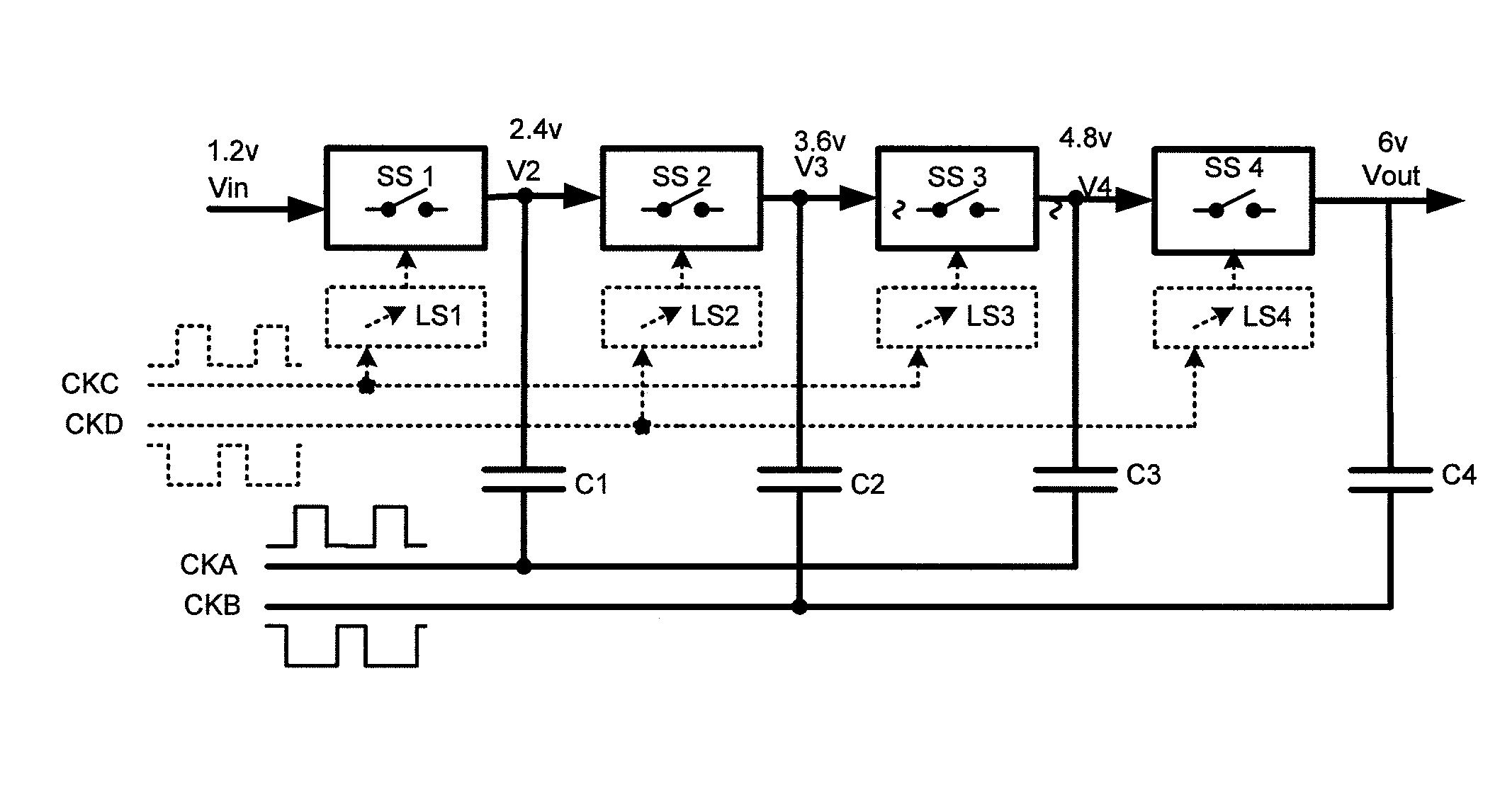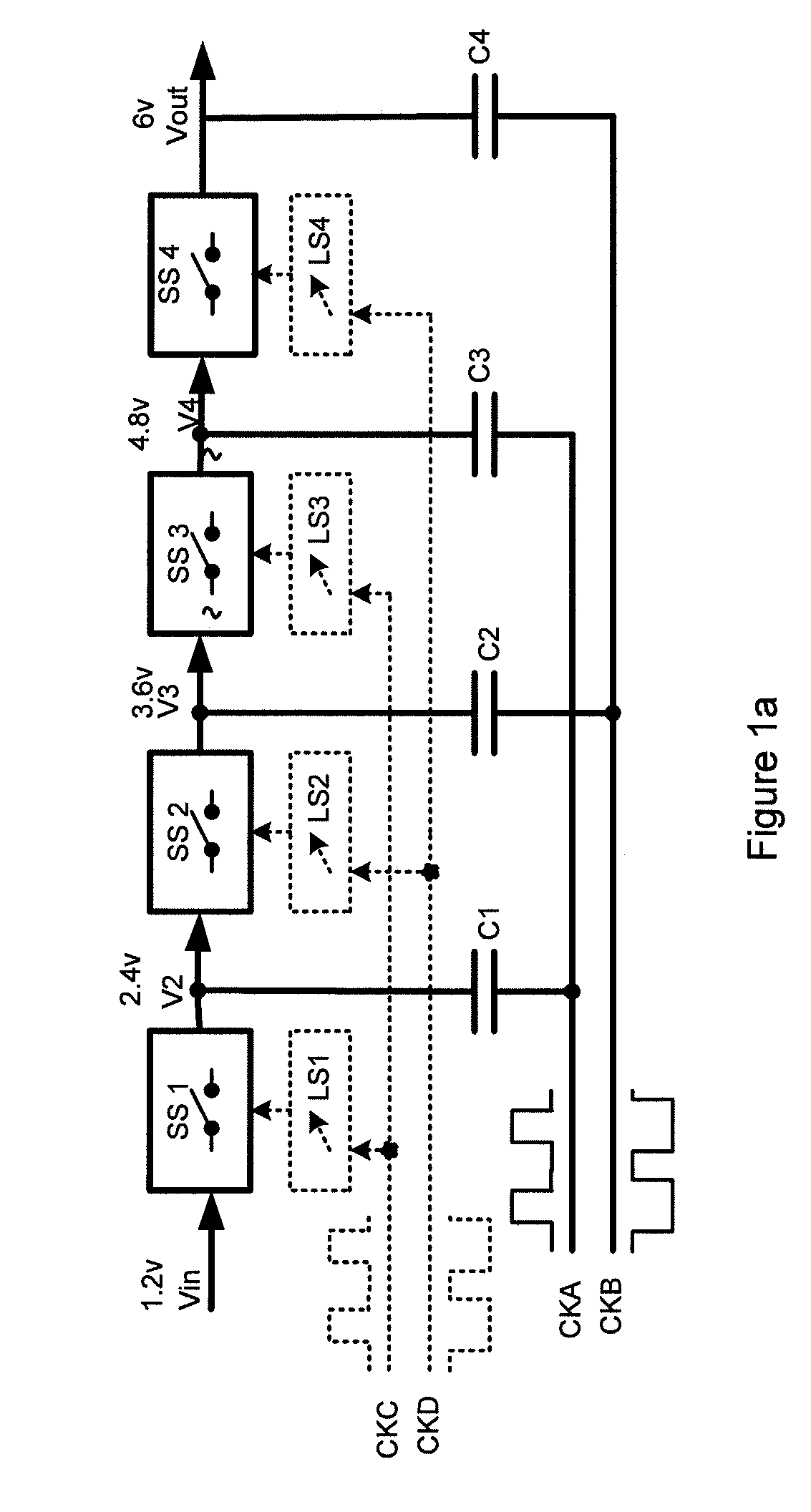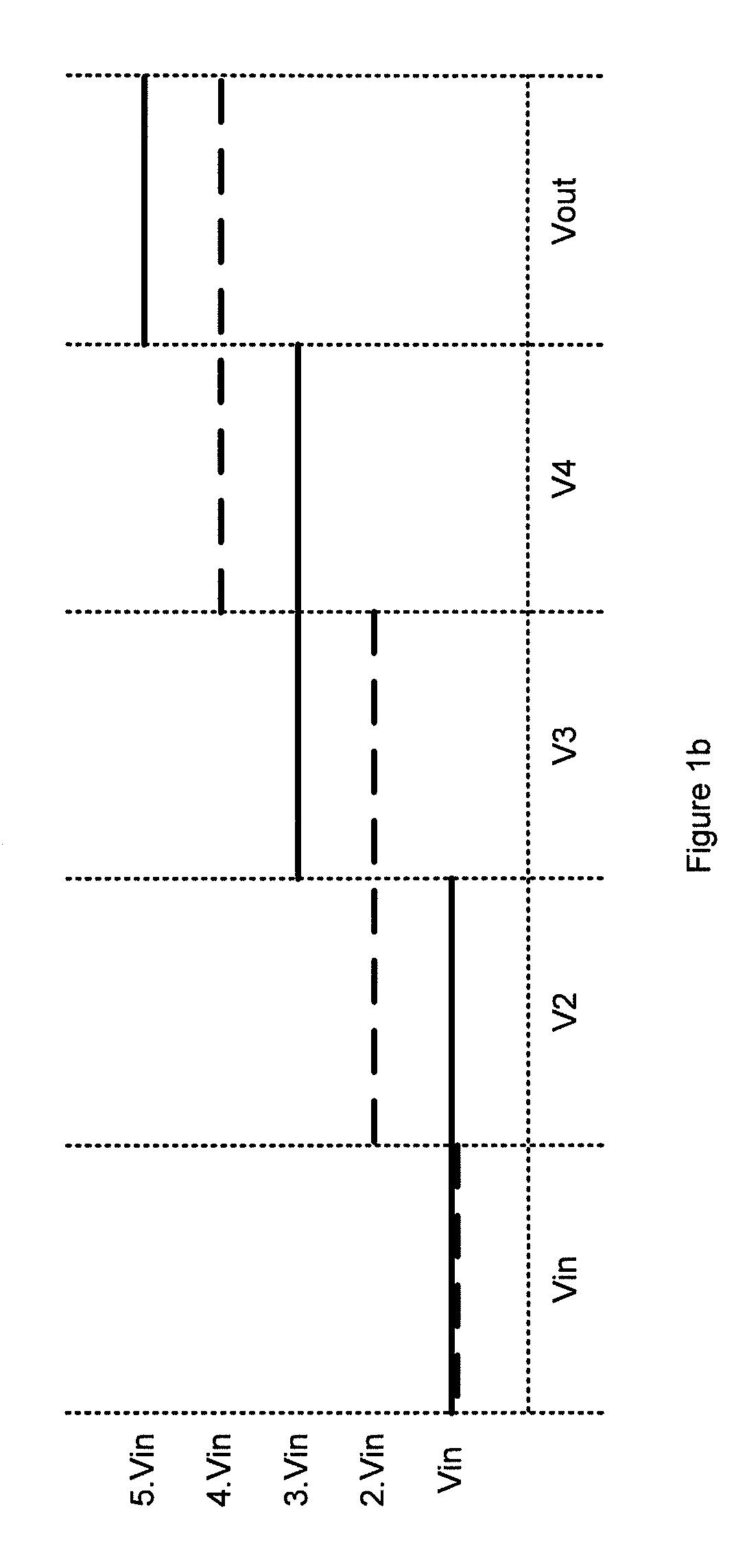Charge pump circuits
a technology of pump circuits and discharge pumps, applied in the direction of corona discharge, process and machine control, instruments, etc., can solve the problems of normal applied voltages and damage to transistors, and achieve the effect of minimising the chance of transistors exceeding their breakdown voltage and minimizing voltage differences
- Summary
- Abstract
- Description
- Claims
- Application Information
AI Technical Summary
Benefits of technology
Problems solved by technology
Method used
Image
Examples
Embodiment Construction
[0049]FIG. 2 shows a charge pump architecture embodiment according to an aspect of the invention. The circuit operates in the same manner, and is similar in arrangement to a convention charge pump circuit such as that shown in FIG. 1, but with the addition of leakage elements, diode clamp devices D1 to D4, across consecutive switch blocks SS1 to SS4, between consecutive pump capacitors C1 to C4. The diodes clamp devices each comprise a diode arranged to be reverse biased in terms of current flow from a higher voltage stage of the charge pump to a lower voltage stage of the charge pump.
[0050]As described above, in normal operation, the voltage difference across each switching stage will be either zero or 2Vin. Thus, except for brief transients, these diodes will either be at zero bias or reverse biased by 2.Vin. In the event of a power down the capacitors will begin to discharge. In the example described above in relation to FIG. 1c a leakage current associated with capacitor C3 caus...
PUM
 Login to View More
Login to View More Abstract
Description
Claims
Application Information
 Login to View More
Login to View More - R&D
- Intellectual Property
- Life Sciences
- Materials
- Tech Scout
- Unparalleled Data Quality
- Higher Quality Content
- 60% Fewer Hallucinations
Browse by: Latest US Patents, China's latest patents, Technical Efficacy Thesaurus, Application Domain, Technology Topic, Popular Technical Reports.
© 2025 PatSnap. All rights reserved.Legal|Privacy policy|Modern Slavery Act Transparency Statement|Sitemap|About US| Contact US: help@patsnap.com



